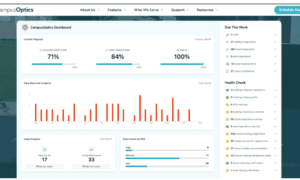Due to diversions, delays, and poor time management, many people put in excessive hours at work. Mastering time management is the only way to get back to reasonable work hours while still getting everything done.
But where do you even begin? How? By making a detailed schedule that you stick to. In this article, you will review some tips for developing a schedule that works for you.
Make a To-Do List
Making a list of everything needed is the first step in any time management strategy. While doing so, consider the specific outcomes you seek from your time management efforts.
A work breakdown structure (WBS) is a useful project management technique for simplifying difficult tasks. Large projects are simplified into more manageable tasks, while project expenses, deliverables, and team coordination are all considered by the application.
In this approach, you can deconstruct and delegate complex tasks to individual members of your team. Teams can collaborate more effectively, keep costs down, and hit their milestones with the help of WBS.
Tasks that contribute to reaching your ultimate objective should also be included. If you’re a worker whose passion is art, you should include both your artistic endeavors and your professional responsibilities in your daily schedule. This way, you can progress toward your professional and personal goals without burning yourself out.
Also, don’t forget to add new items to the list as they come up throughout the day.
Set Priorities for Your Work
Deadlines and levels of difficulty are not the same for every assignment. That’s why it’s crucial to set priorities for your work based on how urgent or difficult they are to complete.
The Eisenhower Matrix provides a framework for identifying and distinguishing between high- and low-priority tasks. The matrix allows you to classify actions into four distinct buckets:
- Do: Time-bound, consequential tasks.
- Schedule: Activities that don’t have a firm due date but will assist you in reaching your larger objectives.
- Delegate: Activities that don’t have to be completed with or by you.
- Delete: Distractions that provide momentary pleasure but not fulfillment.
The “eat the frog” method, popularized by Mark Twain, is another time management strategy for setting priorities. Some tough jobs may take more time than necessary, and tackling them first thing each morning is the best approach to the project.
Using this method, you will trick your brain into thinking it is capable of performing difficult tasks with ease. As a result, you’ll develop more resilience and coping skills with each new obstacle you face.
Timetable Activities
Putting a time restriction on each item on your to-do list will help you construct a daily or weekly timetable that you are more likely to stick to. You can set aside ten minutes to return crucial calls, an hour to investigate the feasibility of a project, twenty minutes for a meeting, and so on.
Even the most disagreeable tasks become manageable when they must be completed in a set amount of time. You can avoid feeling overwhelmed by your large to-do lists if you break down your duties into manageable chunks of time and stick to that schedule.
Keep track of how much time you spend working. Some people, for instance, function best in the morning, while others thrive in the afternoon. Schedule your most time-consuming activities at those times when you are most productive.
Make a Plan for Free Time
The term “discretionary time” describes a person’s unscheduled spare time. Your planner’s free time and scheduled breaks are included.
You have one hour of leeway, for instance, if your meeting ends earlier than expected. Also, you can utilize this buffer to get more done or to do things like relax, review your calendar, check your inbox, etc.
But keep in mind that you can always count on the unexpected. Putting aside some leisure time can help you prepare for an unexpected assignment.
Mind Your Distractions
It’s easy to lose focus and productivity when you have distractions around. Inconspicuous routines can include checking one’s phone or social media multiple times every hour. As a result, when planning your project’s tasks, it’s crucial to think ahead and list potential interruptions, such as personal obligations you can’t ignore.
In this way, you may schedule your time effectively around your obligations and avoid becoming sidetracked.
Invest in Time Management Tools
Make time management a priority. If you have the correct tools, you won’t have to keep track of time manually to see how far along you are in a project.
Master Time for Success
Nobody wants to put in unpaid overtime. That’s why you need a targeted time management plan to help you focus and increase your productivity to take advantage of some well-earned me-time.
Managing your time well means working smarter and optimizing your efforts to experience better success and fulfillment in your personal and professional endeavors.



































